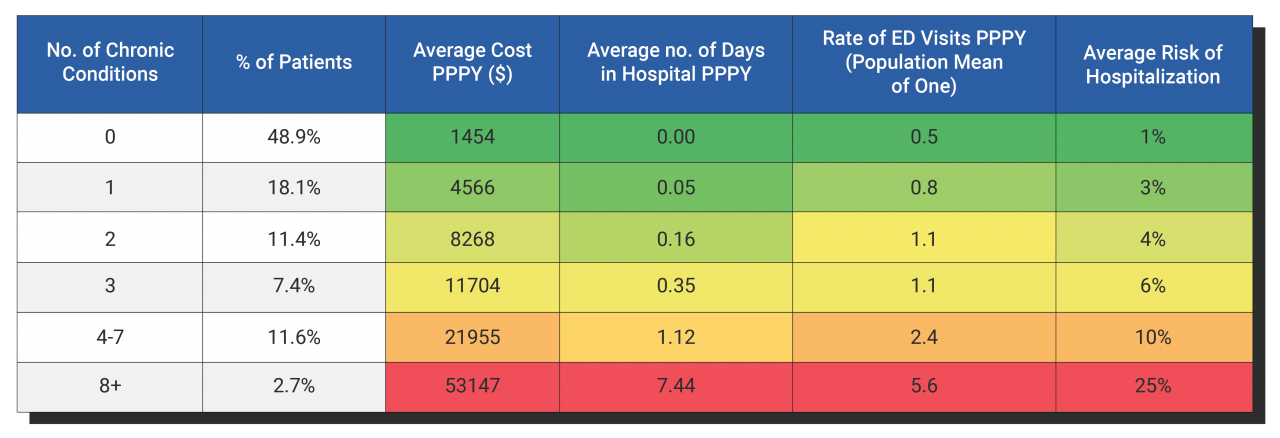
Are you a provider, payor or population health organization looking for a quick tune-up to your existing strategy and planning? Then look no further. In this series of posts, we’re sharing 7 quick wins the ACG System offers its users.
One of the largest sources of health care costs are patients with multiple chronic conditions, often referred to as multimorbidity. The health impacts of multimorbidity are well-documented: increased need for health care services, worse single-disease outcomes, and increased mortality risk.1 The presence of multiple long-term health conditions presents day to day challenges for patients and providers alike. Patients may struggle with multiple specialists, prescriptions, and higher out-of-pocket costs. Providers often encounter conflicting quality metrics and management recommendations, which, frustratingly, are often focused on single disease states.2 With the ACG System, users can pinpoint patients with multimorbidity, understand common disease categories and groupings, and ensure patients are receiving the best possible care.
How does it work? With the ACG System’s segmentation analysis tool, users can divide their patient populations into groups based on number of health conditions. Using gap analysis on these groups, users can verify if they are meeting desired targets for services and care for these specific types of patients. Going a step further, ACG System users can drill down into disease patterns within each subgroup, or take a single disease (like diabetes) to understand common comorbidities.

The ACG System allows users to quickly target specific patient groups for further analysis. In the case of patients with multimorbidity, this allows providers to better meet the needs of the most medically complex patients in the entire population, focusing beyond single-disease quality metrics and workflows. By streamlining these patients’ care and prioritizing their needs, providers can reduce emergency department visits, hospitalizations, and ensure optimal use of specialists. And if you ask us, that’s one in the win column.
See how an integrated health delivery system in Israel used the ACG System to pinpoint high-risk patients for enrollment in a complex care management program by clicking here.
Quick Win #1: Optimize Enrollment in Existing Programs
Quick Win #2: Streamline Medication Needs
While these techniques are focused on US customers, we have parallel suggestions for international ACG System users, developed by our team based in Europe with support from one of our UK users, Sollis. Please contact us for more information.
NOTES:
1 – https://www.sciencedirect.com/science/article/pii/S0895435600003632
2 – https://pubmed.ncbi.nlm.nih.gov/16091574/
Follow Us